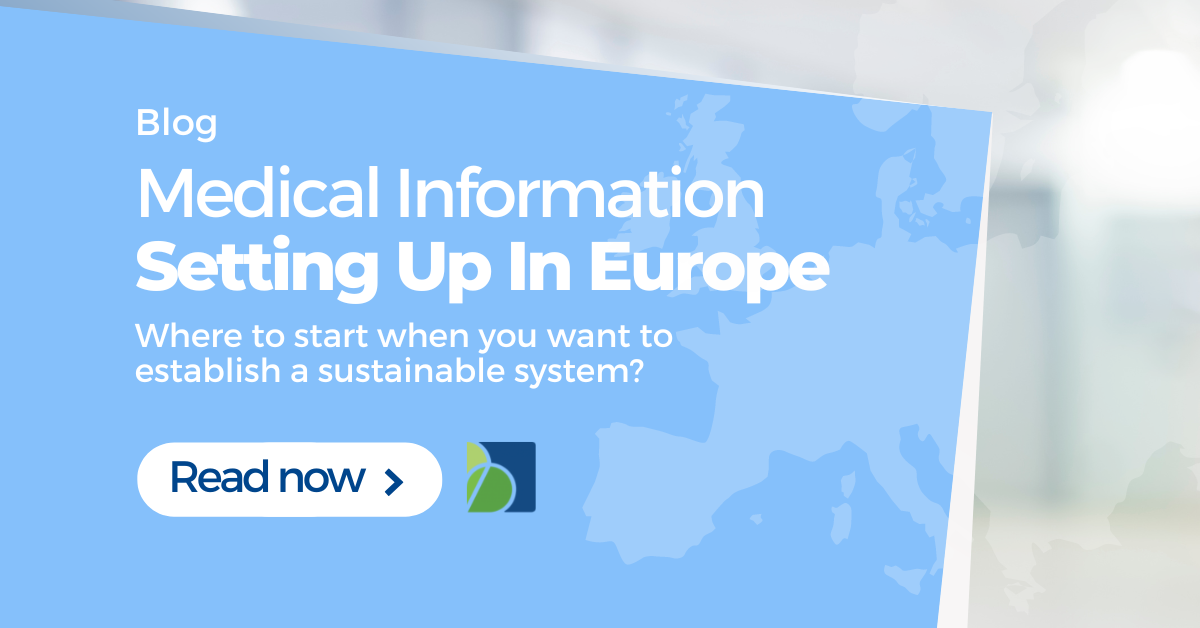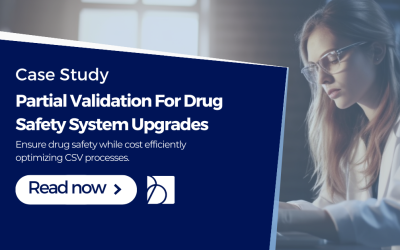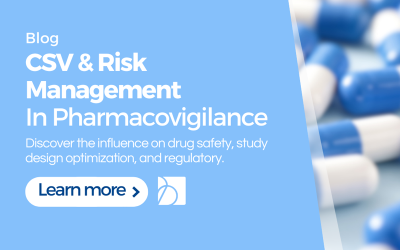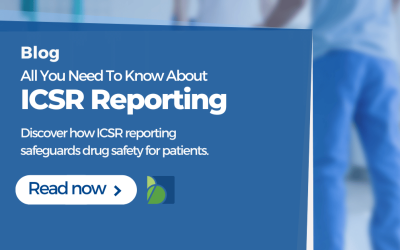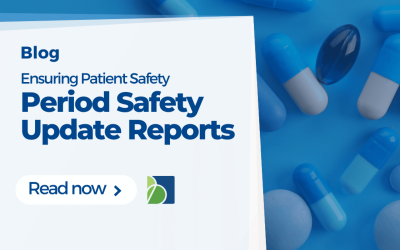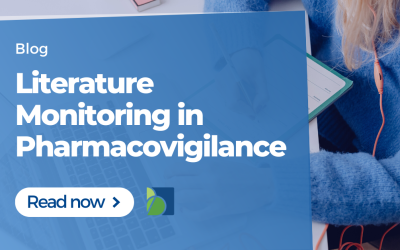Setting up a Medical Information Scientific Service
The world of healthcare is constantly evolving, and one of the most exciting developments is the rise of medical information as a potential source of differentiation. Technological advances such as Global Medical Information databases and content management systems allow for the seamless collection, analysis, and dissemination of critical medical information about the company’s marketed or investigational products and provide healthcare professionals, patients and other customers with the information they need to make informed decisions and deliver better patient care. If you’re considering setting up a Medical Information system in Europe, you’re in for a fascinating journey.
The complex regulatory landscape of the European Union presents both challenges and opportunities, and the right medical information service can revolutionize the way we deliver healthcare in the region. Whether you’re a biotech bringing your first product to marketing or your first market entry in Europe, this blog guides you through the steps of launching a medical information scientific service in Europe, providing you with the insights you need to succeed.
How are Pharmacovigilance and Medical Information connected?
Pharmacovigilance and Medical Information are closely connected because they both collect and hold Insights that can inform strategic decisions and advance additional business goals while reducing errors and making drugs’ use more efficient and safer.
- Pharmacovigilance is the science and activities related to the detection, assessment, understanding, and prevention of adverse effects or any other drug-related problems. The goal of pharmacovigilance is to ensure the safe and effective use of drugs, and to identify and mitigate any potential risks associated with their use.
- Medical Information, on the other hand, is the collection and dissemination of Information about drugs, their indications, and the ways in which they should be used. Medical Information is used to support healthcare professionals (HCPs) and other customers in making informed decisions about the use of drugs, and to educate patients about the benefits and risks of the drugs they are taking.
The connection between pharmacovigilance and medical Information lies in the fact that medical information teams take in and share safety Information (product complaints and adverse events), compile information to answer queries and log into an MI database all the collected data. This data can then be used in combination with pharmacovigilance data to support pharmacovigilance activities, such as the timely detection and assessment of adverse drug reactions, and the early identification of potential risks associated with the use of drugs.
In summary, pharmacovigilance and Medical Information are connected because they both play essential roles in ensuring the safe and effective use of drugs. Both rely on collecting and analyzing information about drugs and their effects on patients.
We recommend this article if you’d like to learn more about setting up a Pharmacovigilance system. Rather see a presentation about it? Watch this replay.
Medical Information Service Objectives and Challenges
Article 98 of EC Directive 2001/83 states that:
The marketing authorization holder shall establish, within his undertaking, a scientific service in charge of information about the medicinal products which he places on the market.
The marketing authorization holders (MAHs) need to compile and maintain up-to-date information about their products in order to be able to provide responses to inquiries that may be medical or technical in nature or related to the therapeutic area covered by the product. To achieve the Medical Information objective, MAHs need to have in places processes to:
- Receive medical Inquiries through various channels, including but not limited to phone, email, websites.
- Document requestor’s contact information and inquiry details.
- Locate currently approved responses within the Content Management System/Repository or Product Information.
- Respond to inquiries both verbally and in writing and maintain documentation of the response provided.
- Develop and maintain standard responses and FAQs globally accessible at local level to ensure consistency of responses worldwide.
- Develop custom responses to Inquiries escalated by local teams conducting literature search and using data-on-file or other information.
- Customize and localize content as per local requirements.
- Monitoring trends of inquiries and frequency of use of responses, and service satisfaction.
- Have a seamless interface with PV and comply with PV requirements regarding the identification and reporting of safety Information.
- Ensure regulatory compliance: Complying with all relevant regulations, such as the General Data Protection Regulation (GDPR), Good Pharmacovigilance Practices (GVP), and Medical Devices Regulation (MDR),Keep up-to-date with the published literature data on its products and disease-state Information.
Except for the standard Medical Information activities, Medical Information teams usually represent the MAH and staff medical Information booths at Medical Meetings/Congresses as the first point of contact with Healthcare Professionals, they are Involved in Promotional Material Review and act as education experts to provide product training to in-field teams.
Guaranteeing establishment and maintenance of a new medical information service throughout Europe can be a complex and challenging task, as many factors can impact its success. The constantly evolving regulatory environment, the ability to respond to varying workloads, increased complexity of information and access to data, changing expectations on preferred communication channels and the competitive landscape of talent acquisition and increased cost of recruiting, are some of the challenges that MAHs currently experience.
Setting up a Pharmaceutical Medical Information Service in Europe
Setting up a medical information service in Europe can be complex and challenging, but with proper planning, preparation, and execution, it can also be a rewarding and successful endeavour that can be evolved into a strategic asset.
Every aspect of the scientific service must be carefully considered, from identifying and understanding the internal needs and the needs of your customers to develop a strategy for language support and regulatory compliance. It is also essential to have a plan for securing resources and establishing a solid infrastructure to support the service once implemented.
Whether you are just starting out or well into the planning phase, this section will provide a roadmap to successfully launch a medical information service in Europe.
- Determine the scope of the service: Define the purpose, objectives, and scope of the medical information service, and ensure that it meets all relevant regulatory requirements in Europe.
- Develop the Medical Information System: Select a Medical Information Database considering both the internal needs (i.e. automation, ease of use, compliance, integrability, cost-efficiency) but also the needs of the critical external stakeholders.
- Implement all the technical means required for medical Information activities: Contact center, medical information database, and content management system. Involve PV to provide their input on the requirements of safety data collection and reporting.
- Conduct testing: Thoroughly test the medical information system to ensure that it is accurate, reliable, and easy to use.
- Establish policies and procedures: Develop and implement procedures and working instructions for managing the medical Information activities, defining roles and responsibilities, and maintaining the medical information system, including data entry, data quality control, data escalation and reporting, and KPIs.
- Train users: Train critical users, like your medical information specialists, to ensure they have the skills and knowledge needed to use the system effectively and accurately.
- Secure data: Ensure that the medical information system is secure and that data is protected from unauthorized access, modification, or theft.
- Obtain regulatory approval: Obtain necessary regulatory approvals from relevant European agencies, such as a marketing authorization, before launching the medical information system.
- Launch and monitor: Launch the medical information service, and monitor system use and specialists’ performance over time to identify any issues and make improvements as needed.
- Implement analytics: Get detailed metric reports and insights sourced directly from the HCPs and consumers that may lead to evidence generating activity.
By following these steps, you can successfully implement a medical information service in Europe, and ensure that it meets the needs of all stakeholders and regulatory requirements.
How many MI contact centers do you need for Europe?
The number of contact centers needed to cover Europe will depend on several factors, such as the size of the target market, the desired level of service, the capability to implement a regional hub, and the resources available.
For example, an extensive medical information service targeting the entire European market may require several contact centers to provide adequate coverage and support. These contact centers could be located in different regions of Europe to provide local support and respond to regional differences in language and culture. On the other hand, a smaller system targeting a specific country or region may only require one contact center.
It is difficult to provide a specific number of contact centers without more information about the specific requirements and resources of the medical information service. However, it is vital to ensure that the number of contact centers is adequate to provide the support and coverage required for the service to succeed.
FAQ
How important in language in MI?
Language is fundamental in the context of medical information systems, especially in Europe, where many languages are spoken across the region. Therefore, the number of languages needed for a Medical Information service in Europe would depend on the target countries and the language support required. Regional hubs can cover countries using a single language.
Language is a critical factor in the success of medical information systems in Europe, as it impacts the user experience, regulatory compliance, communication with healthcare professionals, and patient education.
It is important to consider the resources available for language support and ensure that the number of languages supported is adequate to meet the target market’s needs while also being feasible within the constraints of the project. Providing support in the most widely spoken languages and those of the target countries is a good starting point.




